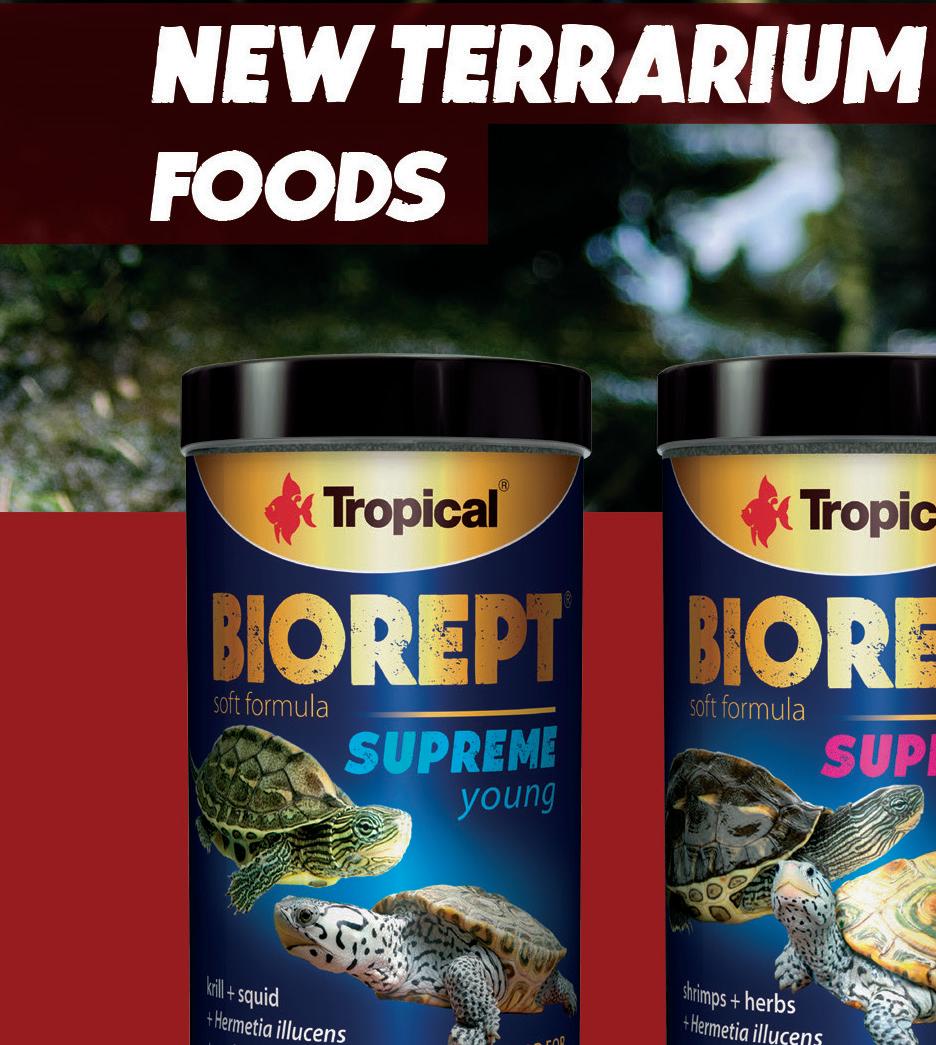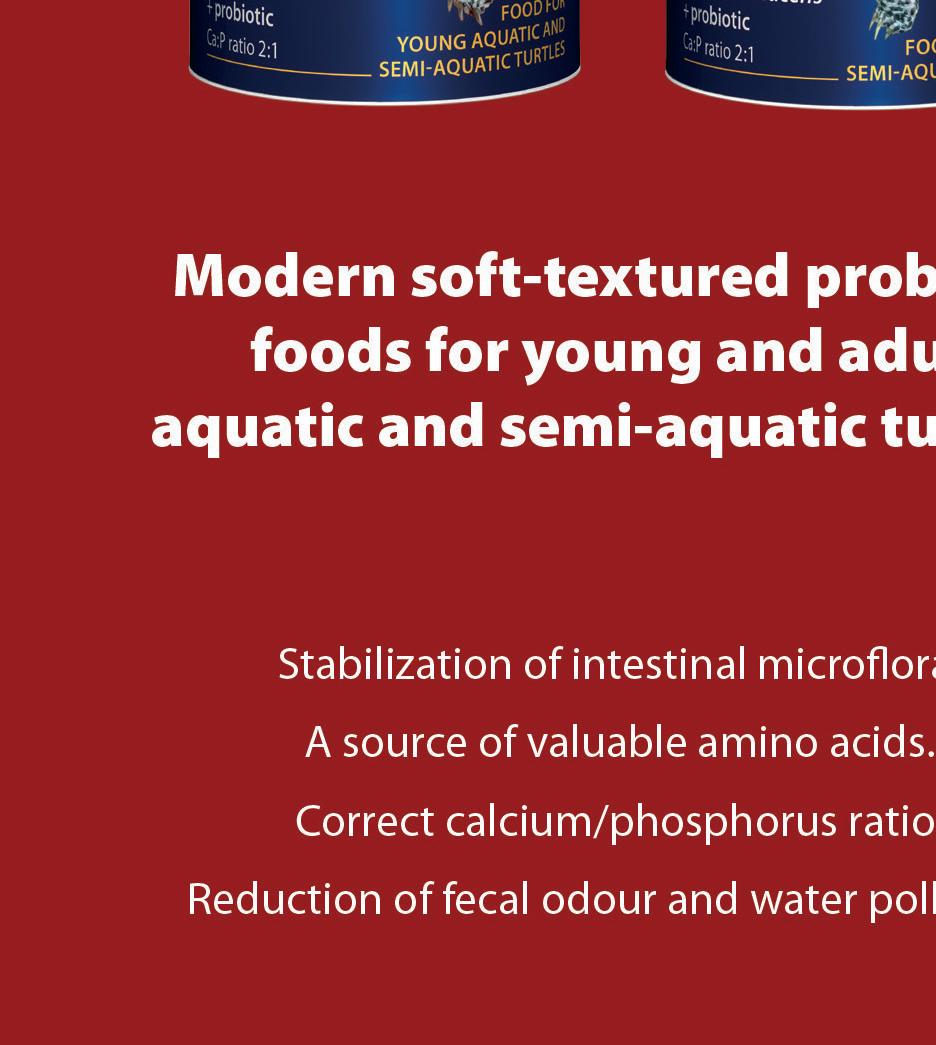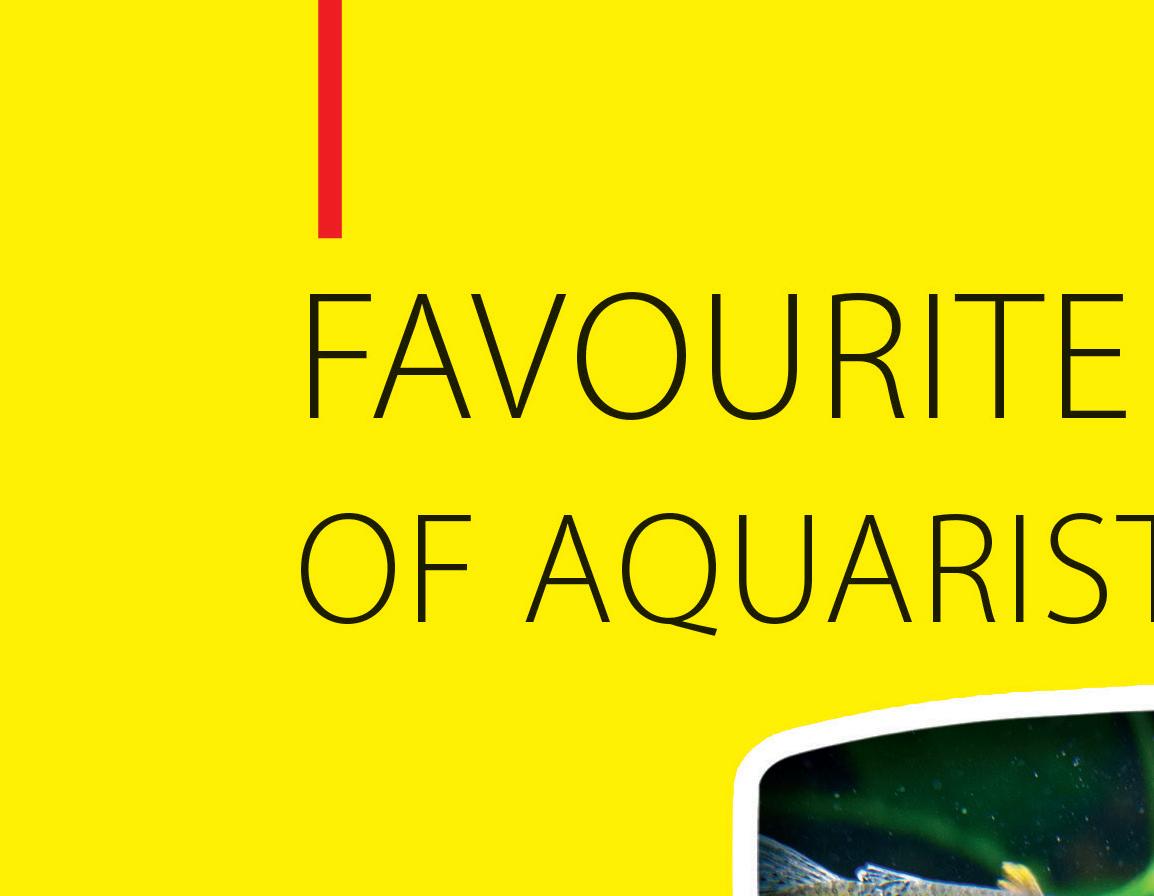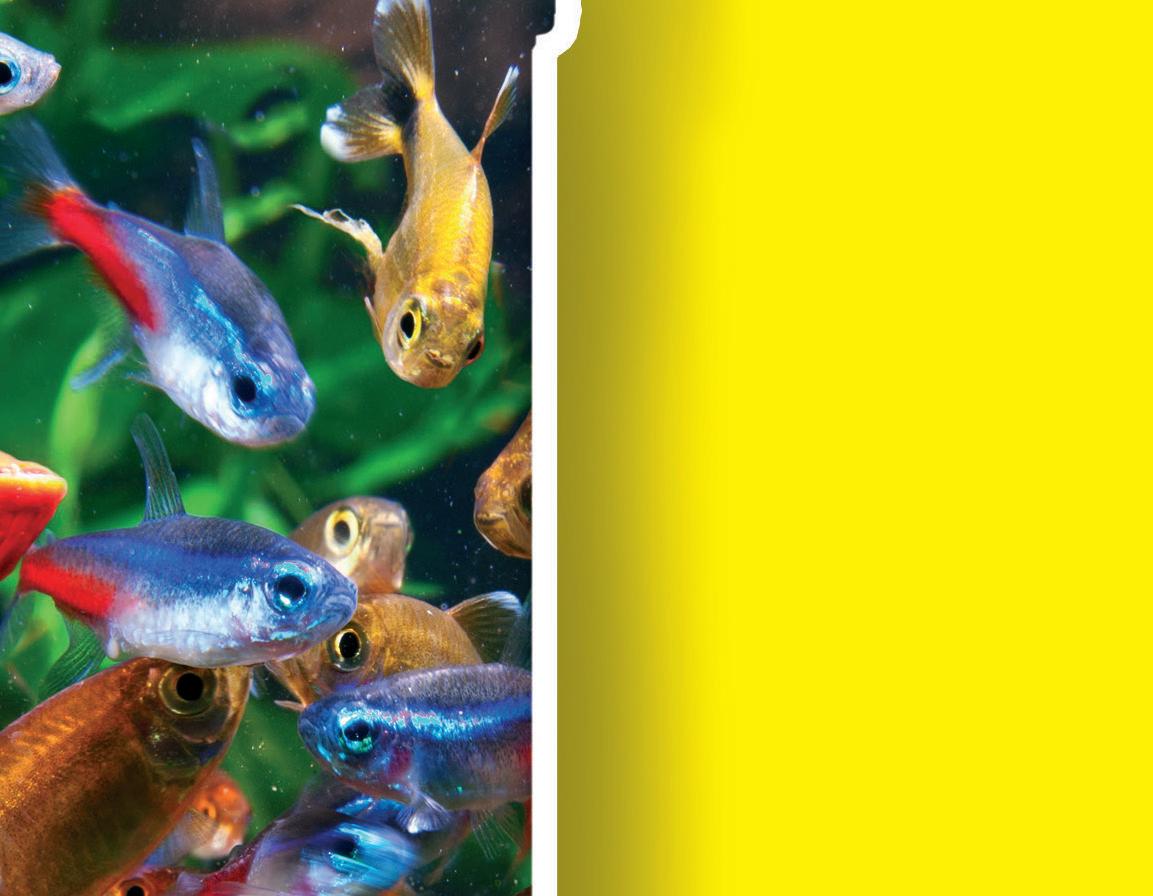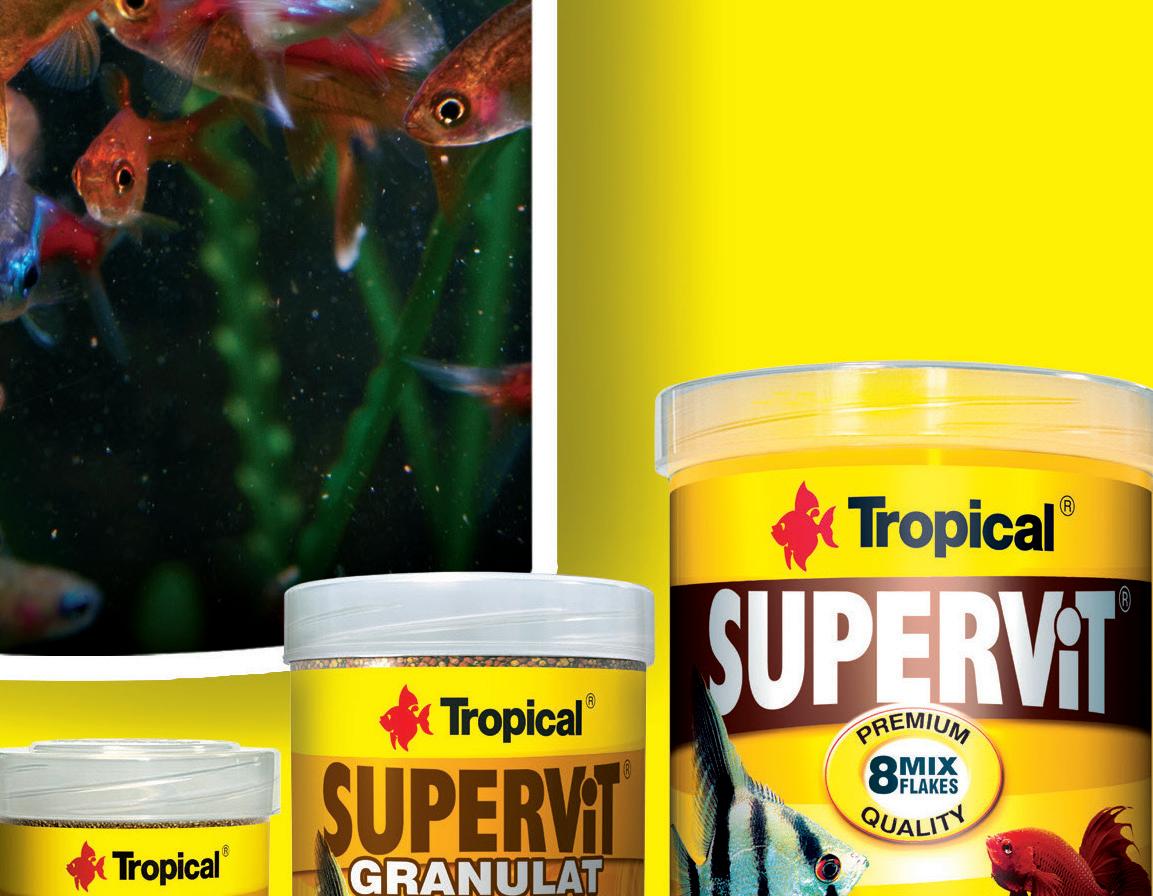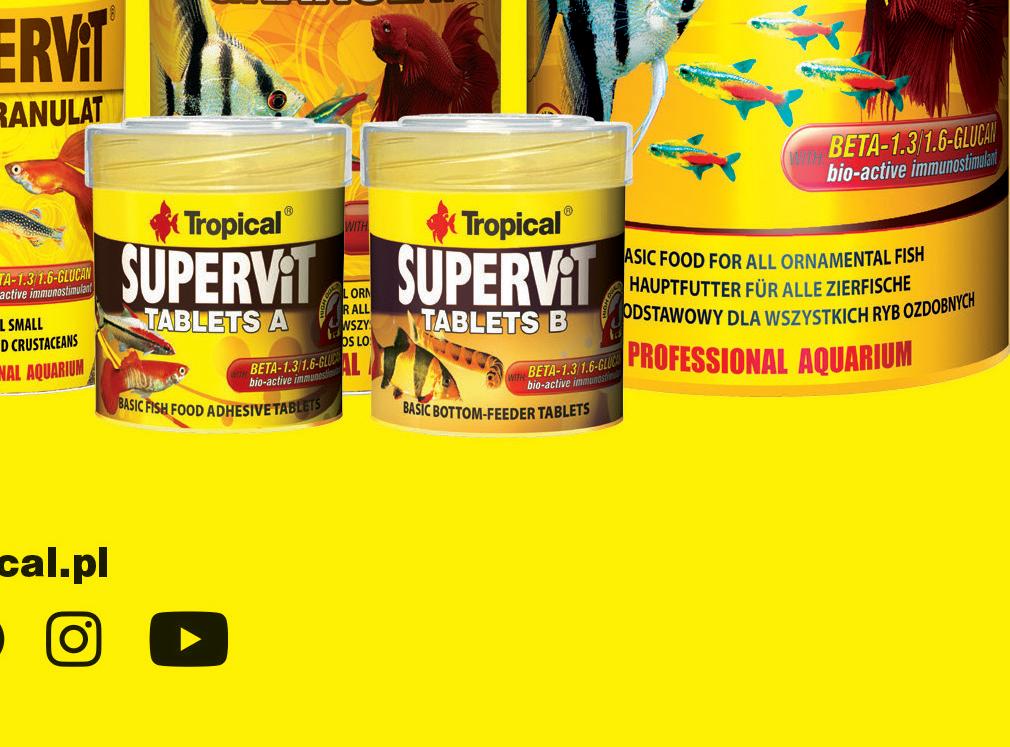
12 minute read
Why is it a good idea to start the terrarium adventure? – Dawid Krótki
WHY IS IT A GOOD IDEA
TO START THE TERRARIUM ADVENTURE?
Advertisement
Dawid KRÓTKI
A graduate of the Faculty of Animal Breeding and Biology at the University of Agriculture in Krakow. Breeder of African and South American cichlids. An expert in the feeding and breeding of reptiles, amphibians and all kinds of invertebrates. Author of many aquarium and terrarium articles.
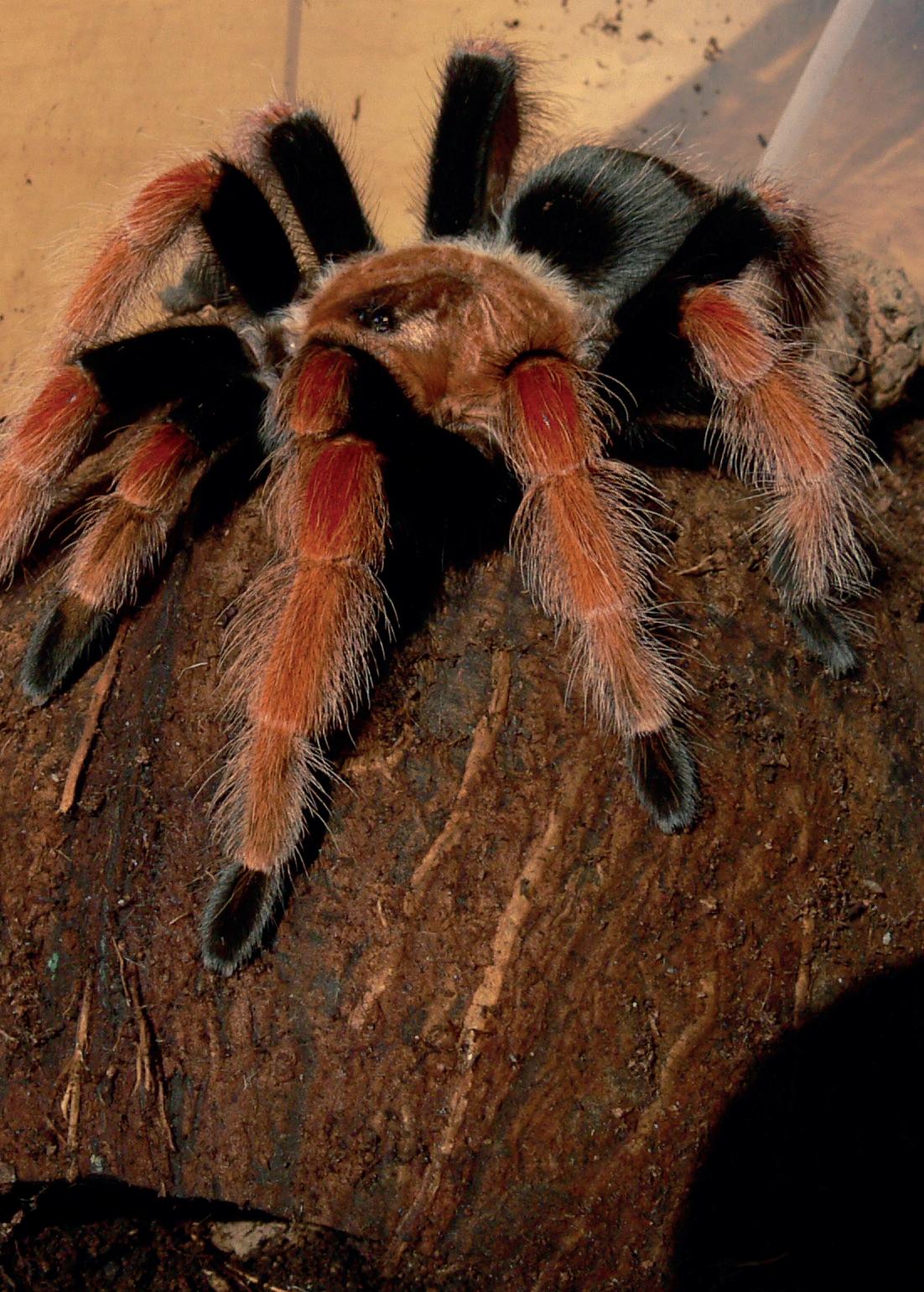
Have you ever considered buying your first reptile? Especially while looking at snakes, lizards or turtles in a pet shop or a zoo? When I’m talking about my hobby people often ask me questions like “Why do you need this at all ?”, “What’s in it for you?”, “Do they do anything besides lying down?”, “Aren’t you afraid they will bite you?”, “It’s horrible, how can anyone like that...?”.
Terrarium hobby can become a real passion, a source of inspiration giving a different perspective on the surrounding nature. However, like any hobby, it requires knowledge. In this article I will tell you how to start your adventure with this hobby and why it is so interesting.
MY FIRST STEPS WITH TERRARIUM For as long as I can remember I have always been most fascinated by animals other than mammals or birds. From an early age, I have enjoyed watching underground life of nearby forests, swamps and drainage ditches, the habitats of frogs, toads, newts, lizards and snakes. Admittedly, I could also follow a woodpecker far into the forest. However, I was far more likely to observe nature on my knees with my nose in the rushes than with my eyes looking up. The birth of moor frogs and grey toads has always been the first sign of spring for me. Not swallows or storks. For me it is the amplexus, or love hug of amphibians, that indicates the departure of winter. At this time of the year, virtually every major puddle in the woods or ditch with water is overflowing with amphibians avidly making love, so anxious for the continuation of their species. Later, with the coming of warmer days, lizards and snakes emerge from their
Boa constrictor is one of the most popular constrictors kept in captivity
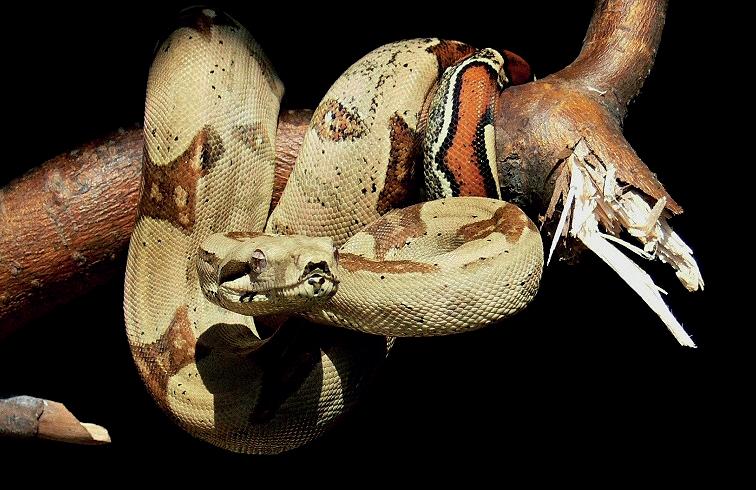
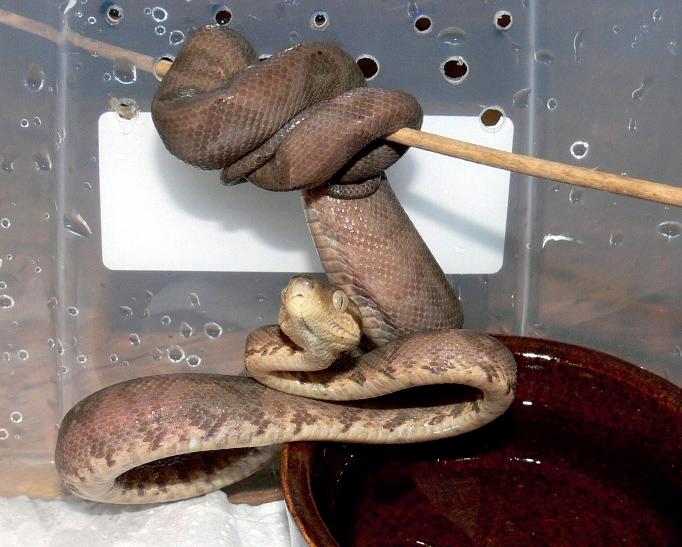
Corallus hortulana is also a constrictor – its slender build and strong muscles enable it to hunt in the treetops
winter hiding places. There used to be a lot of sand lizards and common lizards in the area, so you had to be careful where you stepped. Grass snakes on my favorite meadow could be found in every size. Around the second half of the summer, the first individuals hatched in, no bigger than a shoelace. I loved entering the habitat of these snakes cautiously. Making sure I will not scare them off before they’re in my line of sight. The way reptiles move, their activity starting with daily sunbathing to get the needed energy for hunting, their amazing camouflage and secretive lifestyle gave me great satisfaction with every successful observation. It all fascinated me. The fact that most of my peers remained indifferent or scared made me feel special. More than once, I’ve been attacked by my peers when I indignantly stood up for inflatable frogs or tortured snakes. ARE THEY ACTIVE AT ALL? Reptiles are much more active than you might think. Admittedly, in order to boost their metabolism and jump into ”high gear” they need sun, or more precisely heat and UV radiation. This allows them, as cold-blooded animals, to raise their body temperature, thereby increasing their metabolism and obtaining the energy they need to live. Kept in unsuitable conditions, on a poor diet, often in too small, inadequately decorated terraria, they might be in poor condition and actually look as if they were not moving at all. It’s really sad to watch. A healthy reptile is strong and active. In the morning it goes under a source of light and heat to ”recharge its batteries”. It then sets off in search of food. It usually rests after a meal. Properly fed (but not overfed) reptiles sniff and roam around the terrarium. Of course, they are not as active as
small mammals or birds. There are also differences in the degree of activity between different species of reptiles or amphibians. In the vast majority, however, they are far more active than they seem to be. Everything depends on how much attention we devote to proper arrangement of the terrarium, its size and adequate diet. Often the cause of low mobility of reptiles is improper diet, leading to obesity, emaciation and avitaminosis manifested by apathy. AREN’T YOU AFRAID THEY WILL BITE YOU? Terrarium animals, even those born in captivity, are very often ”semi-wild”, untamed animals with self-preservation instincts not yet suppressed by many years of breeding. It is natural that in stressful situations (such as transportation after purchase or taking the animal out of the terrarium for basic activities such as health check and cleaning) they will try to defend themselves. However, there are species that have been farmed animals for tens of generations and in their case the subject of wildness, fear of man, practically does not exist. They can easily become accustomed to human presence and daily maintenance procedures in the terrarium. Letting reptiles loose around the apartment for extended periods of time is unacceptable. However, we can always let them take a short, controlled walk if the temperature is not too cold, or take them gently in our arms. The ability to safely (both for the animal and the caregiver) handle the animal makes the daily operation of the terrarium easier. It will also come in handy during veterinary checks. Although in the case of species such as common leopard gecko or bearded dragon it is difficult to talk about any aggression, there are exceptions and you should keep in mind that any live animal can bite. There are some differences in the degree to which a reptile can be tamed, so it is always a good idea to choose as your first pet one that you can easily and fearlessly care for. It should also be noted that terrarium hobby is the art of observing animals that do not particularly care for direct interaction with humans. Let the sight of an exotic animal in perfect condition, which is not afraid of us and eagerly comes towards us during feeding, be a sufficient reward.
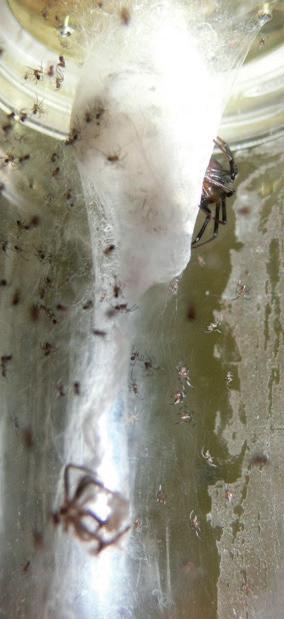
WHAT DOES TERRARIUM SCIENCE GIVE US? My growing fascination with reptiles has made the information in magazines, books, and the Internet insufficient. As a primary, then secondary school student, I did not yet know how to search for professional scientific publications, which are usually available in English. In Poland, not many people do research on reptiles and amphibians. You can for-
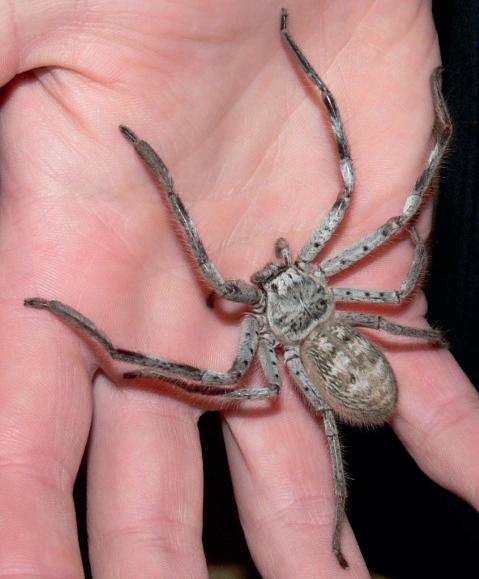
Holconia immanis are large, fast, but harmless to human life
get about nutritional research. Unfortunately there is also no magazine dedicated strictly to terrarium hobby, although there used to be a great “Draco” magazine. So I began to seek contact with these animals instead. First in pet shops, then at terrarium markets and zoos. Reptile shows and expos satisfied my interest temporarily, as I was able to see the rarer species with my own eyes. Moreover, I could talk to experienced breeders and learn something new about the animals or about breeding techniques. It was a little worse with zoos. Apart from not very interesting stock, many of them used

Tadpoles hatching from a spawn in a mid-forest lake

archaic methods of reptile and amphibian keeping, and the terrariums did not look very good either. Today the situation has definitely improved. Perhaps this is because in many zoos the zookeepers and section managers are true enthusiasts, who in addition to work often keep reptiles and amphibians in their own homes. As a result, both at work and at home, they use their specialist knowledge and experience to ensure that the animals develop healthily. What I like most about terrarium hobby is the fact that I can observe behaviors and habits of animals that are normally beyond the reach of average man living in our climate zone.
POLISH HERPETOFAUNA The Polish herpetofauna is more species-rich than we may think. There are five species of snakes: smooth snake (Coronella austriaca), Aesculapian snake (Elaphe longissima), grass snake (Natrix natrix), dice snake (Natrix tesselata), common European viper (Vipera berus), at least four species of lizards: sand lizard (Lacerta agilis), the Eurpean green lizard (Lacerta viridis), viviparous lizard (Zootoca vivipara), blindworm (Anguis fragilis) and one species of turtle – the European pond turtle (Emys orbicularis). The number of amphibians is even greater. Six species of frogs: the marsh frog (Pelophylax ridibundus), the pool frog (Pelophylax lessonae), the dible frog (Pelophylax esculentus), the common frog (Rana temporaria), the moor frog (Rana arvalis), the agile frog (Rana dalmatina), three species of toads: the natterjack toad (Bufo calamita), the common toad (Bufo bufo), the European green toad (Bufo viridis), two

species of fire-bellied toads: the European fire-bellied toad (Bombina bombina), the yellow-bellied toad (Bombina variegata), there is also a garlic toad (Pelobates fuscus), the European tree frog (Hyla arborea), the fire salamander (Salamandra salamandra) and four species of newts: the alpine newt (Ichthyosaura alpestris), the northern crested newt (Triturus cristatus), the Carpathian newt (Triturus montandoni), the smooth newt (Lissotriton vulgaris). A problem of the recent times are foreign invasive species that have settled on the Polish territory, such as ornamental turtles, among others. It should be noted and reminded here that ALL species of native amphibians and reptiles are under protection, partial or complete. They must not be caught, held or even touched without special permits under penalty of a fine. It is also required to keep protective zones for smooth snakes, Aesculapian snakes, and European pond turtles in places where they breed and regularly live. Although I must admit that when I was young this prohibition seemed absurd to me, with age I began to understand it more. So I tried to make others aware of it, and to set an example myself. The greatest threat to modern reptiles and amphibians are environmental problems associated with habitat destruction. However, in difficult times for these animals, it is worth leaving them alone and not disturbing them unnecessarily. Despite being able to observe these animals at home, I have not stopped visiting natural amphibian and reptile habitats.
PURCHASE OF TERRARIUM ANIMALS It’s worth to say a few words about conscious buying of terrarium animals. One of the greatest benefits of terrarium hobby in my opinion is the ability to breed animals which are in danger of extinction. Many people will probably argue that the place of wild animals is in the wild, in their natural environment. It’s hard to disagree with that, which is why a responsible terrarium keeper always purchases animals from a legitimate source. The vast majority of commercially available animals come from legal farms. Such farms are located in the
countries where the species are found and the animals are kept outdoors under natural sunlight. The area is only fenced and secured to prevent the animals from escaping, and food and water are given by the caretakers. Captive bred animals are the second best source – in my opinion. They are usually offered at higher prices. Undoubtedly, however, this translates into better condition and acclimatization abilities of the animal. It gives us certainty and peace of mind that none of our animals has been uprooted from its natural environment. It does not suffer the stress of transport and the difficulty of acclimatization to new conditions. Therefore, do not feel embarrassed when asking about the origin of the animal you intend to purchase. ENDANGERED SPECIES For endangered animals listed in the Washington Convention, CITES Appendix I and II (https://www. cites.org/eng) you need documents proving that the animal was born on a farm or in captivity. Such an animal should then be registered in the appropriate office or district based on the document received. Everything that we have to face before we decide to buy a terrarium animal brings us closer to the world of nature, makes us aware of its protection and increases our knowledge about it. There is a ”wild element” in each of us, a remnant of our ancestors. We live artificial environments of concrete, iron and lately more and more often plastic but somewhere inside us sprouts the need to be in close contact with nature. Taking care of an animal that is not completely tamed can be
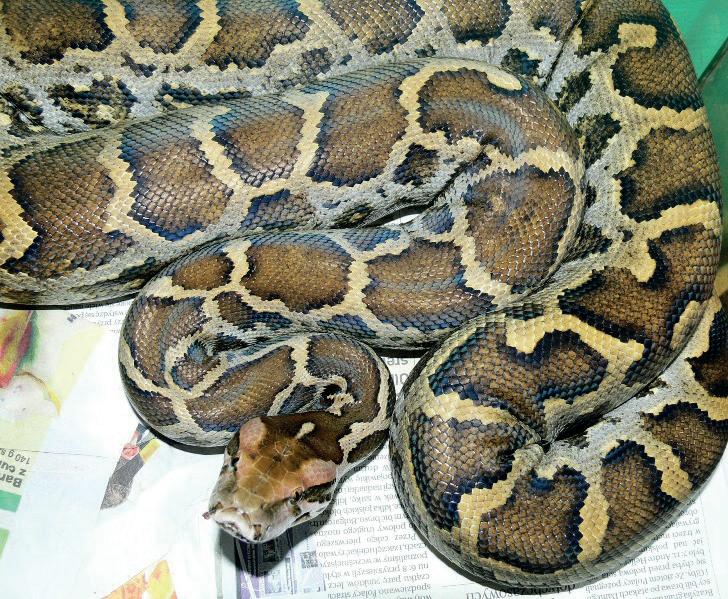
Python molurus is one of the larger and more aggressive constrictors. To deal with this species, it is helpful to have previous experience with large snakes
really fascinating. Moreover, such a terrarium often becomes an exotic, original decoration of the entire house. I believe that conscious terrarium hobby increases our ecological sensitivity, teaches responsibility and requires at least an attempt to understand the diversity of the world around
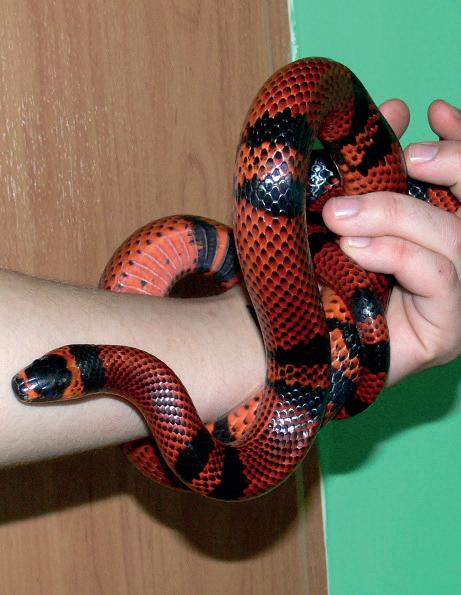
us and the mechanisms that govern it. Increasing the level of public knowledge about wildlife has a direct and indirect impact on nature conservation and saving many animal species from extinction. Do not hesitate to try it.
SUMMARY Summarizing my thoughts I must admit that it is diffi cult to list all the benefi ts of having a terrarium at home. Keep in mind that terrariums are not only about live animals but also plants. Nothing stands in the way of setting up a terrarium for tropical plants alone, such as orchids, insectivorous plants, tillandsias, mosses or ferns. A piece of nature will certainly enliven any interior, soothe the senses and allow you to discover the smaller and larger mysteries of the world of fauna and fl ora.
Photos: Dawid Krótki

